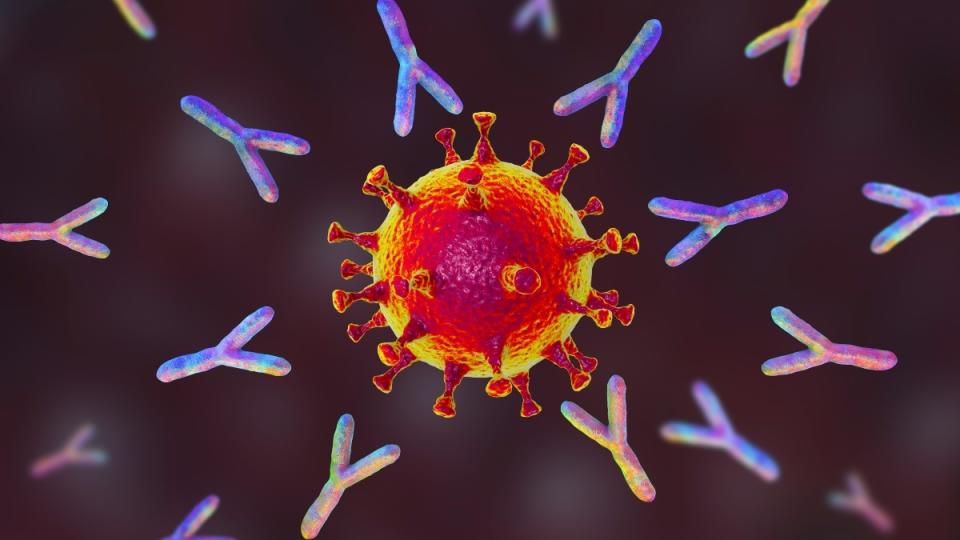To Reap The Benefits of a Hug, Make It Last
Lose yourself in a warm embrace and, just for a moment, all your worries seem miles away. Hugs — a universal gesture of caring, warmth and connection — offer an immense capacity to heal, uplift and relax. But how many hugs do we need a day to reap those rewards? Read on to find out what experts have to say about the power of hugs, how to enjoy the ideal embrace and even how pet cuddles or self-touch can improve your health, too.
Why we all need hugs
Hugs speak the language of connection. A hearty bear hug from a longtime friend says, “I’ve missed you!” while a quick, tender squeeze from a spouse is a daily dose of love. The joyful embrace with a grandchild bursts with joy and adventure. And in somber moments, a gentle, consoling hug comes in with warmth and understanding when words fail.
No matter their style, hugs reminding us of the bonds we all share. Beyond a hug’s apparent simplicity, science proves their profound impact on our physical and emotional health. Our skin, the body's largest organ, is incredibly receptive to human contact. And different types of hugs, whether they're tight, long, or fleeting, release varying emotional signals that our bodies to respond in kind.
“I can tell you not only as a family doctor, but as a human, that the power of hugging should not be underestimated,” says Jen Caudle, DO, a family medicine physician and associate professor in the department of Family Medicine at Rowan University-School of Osteopathic Medicine. “Hugs can help with overall health, both our mental and physical being.”
How many hugs do we need a day?
You've likely heard the famous quote from the late family therapist Virginia Satir saying, "We need 4 hugs a day for survival. We need 8 hugs a day for maintenance. We need 12 hugs a day for growth." But the reality is that it's a little more complex than that. In fact, you'll reap the biggest rewards from the quality of your hugs, not the quantity. “It should be emotion-driven and sentiment-driven,”’ says Caudle. “Not just about trying to check off a box like ‘let me get in my five hugs today so I can be healthier.’”
Clinical psychologist Edwin Fisher, PhD, a researcher with the University of North Carolina’s Gillings School of Global Public Health, echoes that sentiment. In fact, he says that as little as two hugs a day could make a difference. And the hugs can be shared with anyone in your social circle as long as they’re meaningful interactions, says Fisher, whether that's a family member, friend or even a close work colleague. (Click through to learn easy ways to make friends after 50.)

The top 3 health benefits of hugs
Enjoying a warm embrace doesn't just make you smile. It can bolster your health in meaningful ways.
1. Hugs improve immunity
It might seem counterintuitive to lean in for a hug if you're trying to fend off sick-causing germs. But regular embraces might just be a secret ingredient to staying healthy. A Carnegie Mellon University of more than 400 adults found that folks who regularly received hugs were significantly less likely to catch a cold. And if they did catch a bug, their symptoms were noticeably milder than those who didn't get hugs often. Loving embraces curb the production of immunity-weakening stress hormones. Plus they prod white blood cells to release virus-killing antibodies.
Add Fisher, “They found hugs help with your immune response to a cold virus and also are predictive of a healthier immune system." The research unmistakably showcased how a daily hug from a loved one can bolster your defenses, he notes. (Need an extra boost? Click through to learn the immunity-boosting benefits of ginger shots.)

2. Hugs reduce stress
From tackling a long to-do list to handling unexpected expenses like fixing a broken hot water heater, it's no wonder we're often stressed or worried. But a simple hug might be the comforting boost you need to tamp down tension. In a University of North Carolina study, folks who received a 20-second hug prior to a stressful task had notably lower heart rate and blood pressure readings, both indicators of less stress. This implies that a hug, in all its simplicity, can help our bodies manage and reduce the physiological reactions commonly associated with stress, explains Fisher.
How exactly does a hug help you keep calm? It works by lifting levels of three key mood-elevating hormones, Fisher says. First, it increases levels of the "happy hormone" dopamine, which evokes feelings of pleasure. Second, it raises your production of the "feel good" hormone serotonin, known for lifting your mood and combating pain. And finally, it boosts the "love hormone" oxytocin that helps you feel more connected to others. (Tip: Hugging can also ease stress-triggered migraines. Click through to see more migraine self-care remedies.)
3. Hugs ward off loneliness
It comes as no surprise that hugs make you feel connected to others — it's one of the gesture's most well-known benefits. But what may be surprising is just important that is when it comes to combatting the health effects of loneliness. Proof: The US Surgeon General found feeling socially disconnected is as bad for your health as smoking 15 cigarettes a day.
“Especially for people who have been socially isolated for a period of time, a purposeful hug from family and friends can go a long way,” says Caudle. “It gives us a sense of togetherness and connection that contributes to the betterment of their overall health.”
Hugs from other people in your social network "count", too. When a retirement home In New York rolled out "Embraceable You", a voluntary program promoting more physical contact between residents and staff, researcher saw a dramatic improvement in folks' moods. Residents who received hugs or touch three or more times daily felt more energetic, less depressed, had better focus, and enjoyed better sleep compared to those who had less physical contact.
"We’re wired to gain comfort from physical contact with other human beings,” Fisher notes. Long ago, "we needed to band together and connect to survive. Touch was an essential tool for survival, and hugs are a great way of doing it." (If you're the religious type, click through for the best bible verses for loneliness.)
How to boost the benefit of daily hugs
Now that you know how impactful a good hug can be on your health, you might wondering if how you hug matters. While there's no right or wrong way to hug — "try to encourage each other to feel natural and relaxed as opposed to meeting some criteria of a ‘correct hug," Fisher says — there are a few easy tricks that can enhance your hug. Here's how:
1. Hug for at least 10 seconds
An average hug typically lasts three seconds. But longer ones, about 5 to 10 seconds, offer the most feel-good benefits, according to a University of London study. A 10-second hug might seem like an especially long time, but researchers were surprised to find that folks enjoy these longer hugs the most. In fact, a 10-second hug was found to be 40% more pleasurable than a brief 1-second hug. And, according to the study results cited above, if you can double that — extend the hug for a full 20 seconds — you can reap the benefits of feeling less stressed when faced with a challenging task.
2. Focus on the warm embrace
In today's go-go-go world, it can be easy to hug a quick hello or goodbye while your mind is racing with whatever task is next on your to-do list. But to get the most of our hugs, you want to press pause on those thoughts and instead focus on the positive feelings of your embrace in that moment.
“Make it purposeful,” encourages Caudle. “The point is that the hug is a representation of a meaningful thought. There should be a connection behind the interaction. The hug should be based on a sentiment that you're feeling that you want to share an experience with a person. That you want to convey emotion.”

3. Embrace fully
“We all have felt hugged — but not hugged — by someone who is stiff and reserved as they are hugging us," Fisher says. A stiff embrace can feel cold and off-putting rather than warm and welcoming. Fisher's advice? Relax your body, then make your hug firm but not rib-breaking, face each other, and close your eyes so that you can feel and react to your bodies against each other. Maybe even seal your embrace with a kiss, depending on whom you’re hugging, recommends Fisher.
Tip: We know you already know this, but it bears repeating. Respect others' boundaries by listening to people’s body language or even asking if they want a hug before going in for an embrace, advises Caudle.
Other types of hugs
No need to stress if you can't always meet your daily "hug quota". Caudle says embracing a pet offers many of the same benefits of human hugs. The proof: Research suggests simply snuggling up with your dog or petting your cat reduces stress by up to 58% in as little as five minutes.

Even a self-hug can deliver powerful benefits. “Self-hugging mirrors meditative activities or indulging in a soothing bath, practices that certainly alleviate stress,” Fisher says. So next time you're feeling on-edge and you're not near someone to share an embrace, wrap your arms around yourself in a big bear hug and you'll feel your tension start to melt away. (Click through to discover if your dog is okay with being hugged.)
3 more benefits of self-touch
Interested in other ways you can improve your health through the power of touch? These simple moves can be done anytime, anywhere.
1. Erase stress by placing your hand over your heart
The next time “one of those days” leaves you feeling on edge, place your right hand over your heart and take three deep breaths. Concentrate on the warmth, the pressure of your hands, and the feeling of breath entering and leaving your lungs. Research in Comprehensive Psychoneuroendocrinology suggests that this type of “soothing self-touch” calms your body’s autonomic nervous system, producing calming effects that last 40 minutes. (Click through to see how breathing in orange essential oil can help tame stress, too.)
2. Tame aches an pains by crossing your arms
If your knees are aching or your head is throbbing, wrap both arms around yourself and squeeze for 20 seconds. Research in Pain suggests crossing your arms over our body's center line as you squeeze short-circuits the brain’s ability to register pain, blocking painful sensations head to toe. Also smart: Use your fingertips to gently stroke your upper arms as you hold that pose. Light stroking stimulates afferent c-tactile neurons in skin that signal the body to release painkilling endorphins.

3. Beat the blues by rubbing your belly
To shake off a glum mood fast, try this. Place a hand on your abdomen, centered over your belly button, and gently rub in circles. Focus your mind on the sensation of pressure between your hand and your body. A University of Miami study suggests you’ll boost mood-lifting serotonin up to 28% and dopamine up to 31%.
For more ways to tap into the power of touch:
“I Eased Years of Stress by Hugging a Weighted Stuffed Animal!”
Ease Constipation and Indigestion With This 2-Minute Stomach Massage
“Pelvic Floor Massage Stopped My Embarrassing Bladder Leaks — For Good!”
This content is not a substitute for professional medical advice or diagnosis. Always consult your physician before pursuing any treatment plan.
